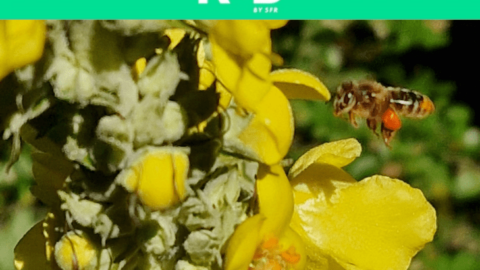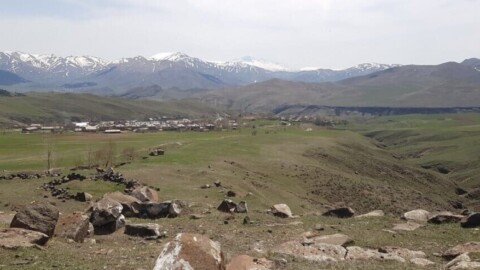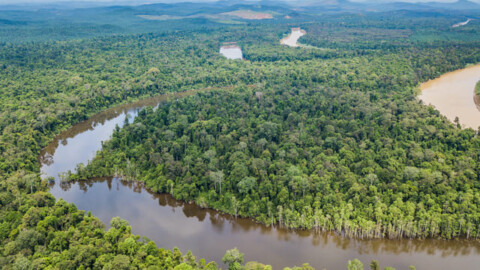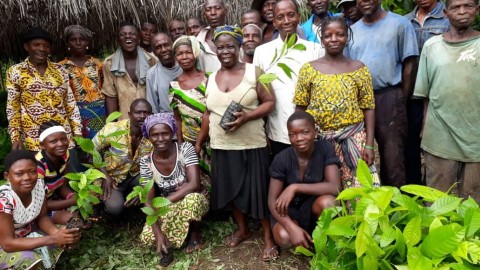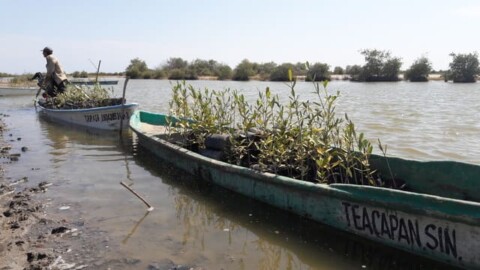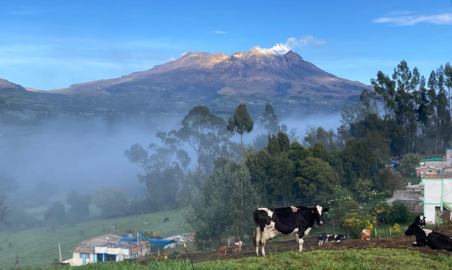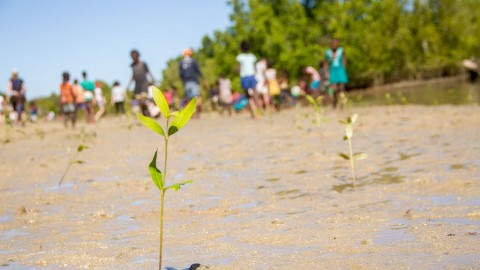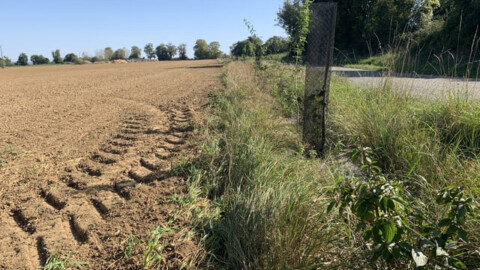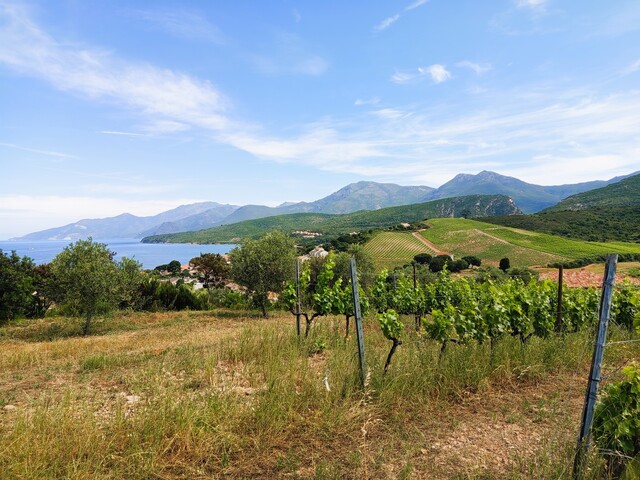
Background & challenges
The Patrimonio wine-growing region marked a decisive milestone in 1968 with the signing of the decree recognising the AOC Patrimonio, marking a historic turning point for the appellation.
Today, Patrimonio vineyards cover more than 400 hectares across the communes of Barbaggio, Farinole, Oletta, Patrimonio, Poggio-d’Oletta, Saint-Florent, and Santo-Pietro-di-Tenda. In 2022, Patrimonio became the first appellation in France to completely ban the use of chemical herbicides in its production standards — a major step forward, with a clear objective: to reach 100% organic production in the coming years.
However, the vineyards are have to cope with an increasingly dry climate, drying winds, more frequent heatwaves, and a ban on irrigating vines after three years (in line with AOP Patrimonio rules). These conditions are causing o water stress, higher alcohol content in the grapes, lower yields, and an increase in vine mortality.
At the same time, the natural habitats of the shrike – an emblematic, regional bird species under threat – are disappearing. Considered an ‘umbrella species,’ the presence of shrikes helps maintain many organisms that benefit the vines ecosystem balance. The project therefore aims to recreate suitable habitats for this bird species and, more broadly, strengthen local biodiversity.
Agroforestry offers an innovative solution for:
- Protecting vines from wind, sun, and episodes of drought.
- Improving soils: increase in organic matter, better water infiltration and storage.
- Strengthening the resilience of grape varieties (Vermentino and Sciaccarello) against heatwaves and climate change.
- Supporting biodiversity: creation of favourable habitats, especially for umbrella species like the shrike.
- Capturing carbon and regulating the microclimate, contributing to the fight against global warming.
- Serving as a demonstration model, inspiring other Corsican and Mediterranean winegrowers to adopt vitiforestry.
Finally, this programme forms part of a wider approach to agricultural and territorial resilience. By diversifying the landscape and integrating fruit trees and local species adapted to the Corsican climate, the estates will become a working example of innovation in vitiforestry. It illustrates the ability of island farming to adapt to climate challenges while preserving its identity and traditional grape varieties. Over time, this project could inspire other winegrowers on the island and across the Mediterranean, triggering a demonstration and dissemination effect for agroforestry practices.
Project type

agroforestry and vitiforestry
Beneficiaries

Mathieu and Antoine, two winegrowers in Corsica
Number of trees

2,600 lasting trees planted
Species planted

Orenga de Gaffory (926 trees): Holm oak, Montpellier maple, Bay laurel, Elder, Phillyrea, Laurustinus, Strawberry tree, Germander, Hazel, Dogwood, Hawthorn, Lime tree, White mulberry, Bitter orange, Laburnum, Mastic tree, Myrtle, Olive tree, Almond tree.
San Quilico (1,674 trees): Whitebeam, Corsican alder, Morello cherry, Wild cherry, Hop hornbeam, Corsican chestnut, Cork oak, Holm oak, Downy oak, Montpellier maple, Fig tree, Mulberry, Olive tree, Lime tree, Corsican citrus, Hazel, Strawberry tree, Hawthorn, Heather, Dogwood, Laburnum, French lavender, Germander, Mastic tree, Bay laurel, Elder, Thyme, Myrtle, Laurustinus.
Partner

ERA – Agroforestry Research and Development Company
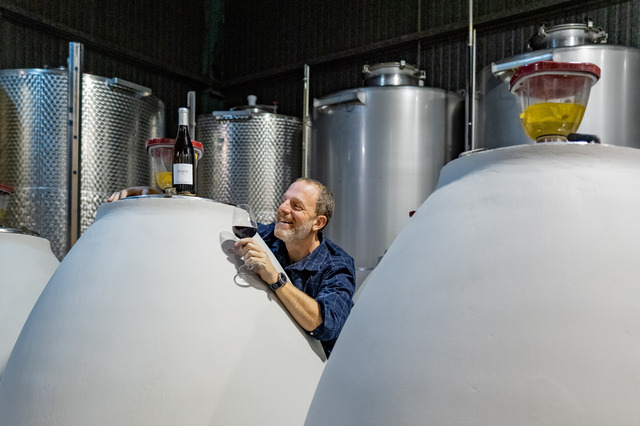
Works timeline
- Late October – early November 2025: soil preparation.
- November – December 2025: phase 1 planting and mulching.
- November – December 2026: phase 2 planting.
- Monitoring: occasional watering up to three times every summer during the first three years, formative pruning, and tree maintenance.
- Local involvement: mobilisation of family and friends for the planting work and participation of schoolchildren in planting and awareness activities.
Planting partner
On this project, ERA is the agroforestry technical partner of Orenga de Gaffroy and San Quilico, contributing its expertise, skills and network at every stage, from design to the promotion of results.
BUDGET
The total budget to be raised is €27.10 per tree, i.e. €70,460 for all planted and perennial trees, broken down as follows:
- 90% allocated to the planting project, detailed as follows:
- Plants and replacements: €8.19
- Mulching and protection: €5.00
- Occasional watering during the first three years: €0.80
- Technical advice and project design: €2.92
- Project monitoring and training over three years: €2.62
- Coordination, project management, and communications: €2.15
- A Tree for You’s collection, monitoring, and communication costs (10%): €2.71
- 10% (€2.71) for A Tree for You’s overhead costs.
Mathieu and Antoine’s work on the project amounts to soil preparation, planting and maintenance work totalling €10,270, broken down as follows:
- Soil preparation: €1.20
- Planting-related activities: €2.75


